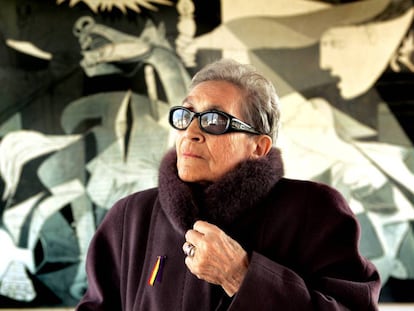A journey to Ravensbrück concentration camp, the Third Reich’s largest brothel
The historian Fermina Cañaveras depicts in ‘El barracón de las mujeres’ the terror faced by female prisoners forced into prostitution, which included two hundred Spaniards
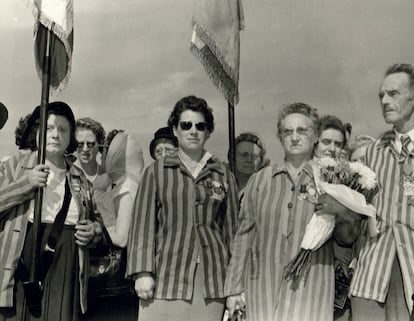
Since 2008, the historian Fermina Cañaveras (46 years old from Torrenueva, Spain) has been putting names, faces and preserving the dignity of the women forced into prostitution in the Ravensbrück concentration camp, the Third Reich’s largest brothel, but she has managed to keep her emotions intact. With a crack in her voice, she has not become accustomed to the story of such infamy. There is no way to keep quiet in the face of such lurid working material: the project established in Nazi Germany exclusively to abuse women’s rights. The three pillars on which this concentration and extermination camp was built were rape, forced abortions and sterilization. 130,000 women passed through the camp between 1942 and 1945. On the day of its liberation, some 15,000 women had survived, of whom some 200 were Spaniards. Fermina Cañaveras has so far managed to locate 26 of them.
Located 90 kilometers from Berlin, Ravensbrück was the largest women’s camp on German territory and the second biggest in Europe after Auschwitz. Yet very little is known about Ravensbrück. It was one of the last to be liberated by the Allies and there was time to destroy much of the documentation stored there. Interred in the haze of oblivion, Fermina Cañaveras puts names and faces to the women who became sex slaves in Ravensbrück. The name of Isadora Ramírez García (Madrid, 1922-2008) — the main character of El barracón de las mujeres (The Women’s Barracks), the first novel by this historian specialized in the subject of women and repression during the conflicts of the 20th century — is one of them. “Unfortunately, history is mostly narrated by men. We have always talked about exiles, wars and camps from the point of view of men’s suffering, but what about women? Why is there this tendency to neglect the memory of our country, but particularly the oblivion of women?” Cañaveras wonders during a brief visit to Seville, where she meets EL PAÍS.
Cañaveras has had to fictionalize the story of Isadora and other companions on that journey to hell because fiction has remained the only glue to stick together the pieces encountered in her exhaustive documentary research. Even so, the names and, most of all, the system of humiliation and human degradation flawlessly orchestrated by the Third Reich to exploit and experiment with women under pseudo-scientific pretexts are extremely rigorous and truthful. “They raped them some 20 times a day, in front of many soldiers who came to watch, and many of them fell pregnant. They experimented on these women, cut open their wombs and let them die to see how long the fetuses would last,” she says. It is not morbid, claims the historian, “it is memory and that is how it must be told.”
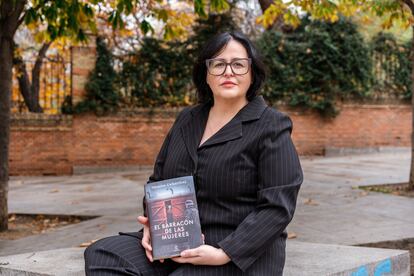
The context described in the book is spine-chilling. Along with the day-to-day rapes, this concentration camp was a laboratory for practices that defy any scientific or moral consideration, such as injecting women with chimpanzee semen to test whether they could procreate female-monkey hybrids. Others had body parts removed and reimplanted to ascertain their recovery.
Isadora Ramírez García, one of the last known Spanish survivors, passed away in Madrid in 2008, the very year in which Fermina Cañaveras decided to embark on the redemption of this story, and who she was unable to meet. Her starting point was a photograph discovered while she was immersed in another historical memory recuperation project: “I was researching how the Communist Party organized itself in an apartment in Atocha in hiding after the Civil War, I am not an expert on World War II, but a CP militant tipped me in the right direction.” She initially balked at the idea out of professional integrity, but she was encouraged by many voices to embark on this journey towards the dignification of these women. The judge Baltasar Garzón, who signed the novel’s front page, and her colleagues in the History Commission of the Teatro del Barrio de Madrid, where she was a member at the time, were instrumental in pushing Fermina Cañaveras to write this story, from which she has not emerged “unscathed,” she confesses.
And so, in the faded photograph she found, she knew she had to alter her work: it showed the image of a woman from neck to waist, with an inscription in German tattooed on her chest: Feld-Hure — ‘country whore’. This is how they marked Isadora, who died at the age of 86 with the everlasting memory of the humiliation still inscribed on her skin. “I use the word ‘whore’ because it is the literal translation of hure.” In this novel there is no euphemism, there is only truth. Even in the brutality of the words. “The pregnant women were the rabbits,” the author recounts, and the barracks of the madwomen was the name used to confine, in an even more ignominious ostracism, all those who could not endure so much pain and lost their minds.
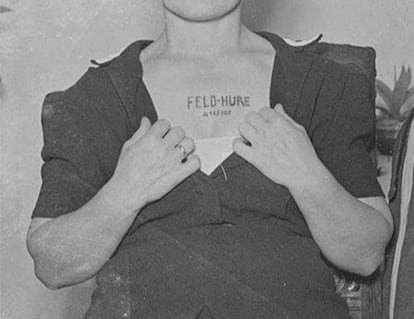
That was the experience that forever shaped the story of Isadora Ramírez García, daughter, niece and sister of Spanish republicans. At the end of the Civil War, she crossed the border to France to search for her brother Ignacio, who disappeared during the conflict. There she joined the Resistance until she was arrested and deported to Ravensbrück. She was 20 years old. But El barracón de las mujeres features more real characters, all survivors of the horror. Constanza Martínez (1917-1997), also a member of the Resistance, whose fragile health after the experience of the concentration camp did not impede her from becoming vice-president of the Amical de Mauthausen — an association aimed at defending the rights of the Spaniards deported to the concentration camps of the Third Reich. Another is Neus Català (1915-2019), someone who Fermina Cañaveras did know of and whose testimony was crucial in reconstructing this story. Indeed, Neus was the founder of the Amical de Ravensbrück. Since the end of World War II she dedicated her life to making sure that the names of those who died and suffered captivity in that inferno were not forgotten.
The Aragonese Elisa Garrido (1909-1990) is also the subject of a passage in the book that is particularly moving because of her courage. This prisoner caused the explosion that disabled the Nazi howitzer factory of the Hafag commando, where she had been held as a slave. She dedicated her life to helping those who had served in the Resistance.
And in stark contrast, the French woman Catherine Dior (1917-2008), sister of the famous designer Christian Dior, appears in the novel as a member of a Franco-Polish intelligence unit. “Catherine was very unlucky because she was arrested on the eve of the liberation of Paris. She was deported to Ravensbrück, but she survived,” explains Cañaveras. In 1947, her brother created a perfume — Miss Dior — in her honor and in memory of her companions.
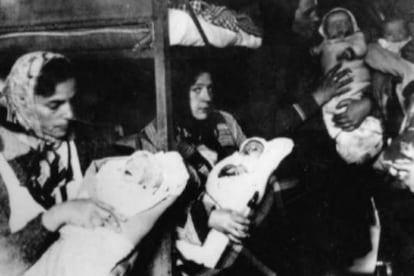
And the living hell of Ravensbrück, also the message that the author wants to convey in novel, is “a story of resilience and fellowship. There, all these women helped, accompanied, looked after and protected each other to help most of them survive. This novel is the consequence of their experiences, their fears, their silences and their feelings. It is the work of numerous hours of research that have culminated in a homage to all those who have remained in the shadows of history.”
Sign up for our weekly newsletter to get more English-language news coverage from EL PAÍS USA Edition
Tu suscripción se está usando en otro dispositivo
¿Quieres añadir otro usuario a tu suscripción?
Si continúas leyendo en este dispositivo, no se podrá leer en el otro.
FlechaTu suscripción se está usando en otro dispositivo y solo puedes acceder a EL PAÍS desde un dispositivo a la vez.
Si quieres compartir tu cuenta, cambia tu suscripción a la modalidad Premium, así podrás añadir otro usuario. Cada uno accederá con su propia cuenta de email, lo que os permitirá personalizar vuestra experiencia en EL PAÍS.
¿Tienes una suscripción de empresa? Accede aquí para contratar más cuentas.
En el caso de no saber quién está usando tu cuenta, te recomendamos cambiar tu contraseña aquí.
Si decides continuar compartiendo tu cuenta, este mensaje se mostrará en tu dispositivo y en el de la otra persona que está usando tu cuenta de forma indefinida, afectando a tu experiencia de lectura. Puedes consultar aquí los términos y condiciones de la suscripción digital.
More information
Últimas noticias
Most viewed
- Reinhard Genzel, Nobel laureate in physics: ‘One-minute videos will never give you the truth’
- Oona Chaplin: ‘I told James Cameron that I was living in a treehouse and starting a permaculture project with a friend’
- Pablo Escobar’s hippos: A serious environmental problem, 40 years on
- Why we lost the habit of sleeping in two segments and how that changed our sense of time
- Chevy Chase, the beloved comedian who was a monster off camera: ‘Not everyone hated him, just the people who’ve worked with him’

